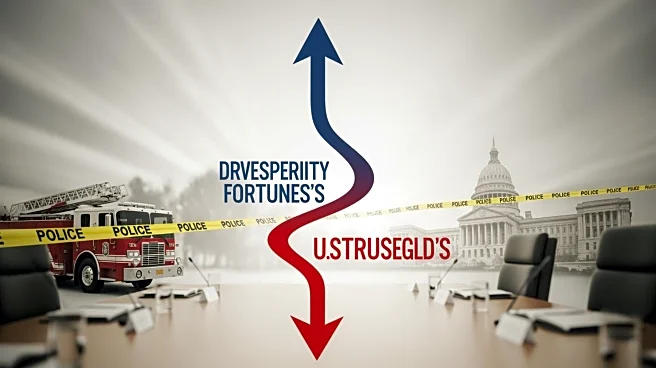What's Happening?
Recent data indicates that layoffs in the United States have reached levels typically seen during economic recessions, with 1.1 million workers laid off so far this year. This trend is raising concerns
about the stability of the U.S. job market and the broader economic outlook. The layoffs are occurring across various industries, reflecting the challenges businesses face in adapting to changing economic conditions and consumer demands.
Why It's Important?
The increase in layoffs is a significant indicator of potential economic distress, which could impact consumer confidence and spending. As businesses reduce their workforce, the ripple effects may lead to decreased economic activity and further job losses. This situation could prompt policymakers to consider measures to stimulate the economy and support affected workers, such as unemployment benefits or job retraining programs.
What's Next?
Economic analysts and policymakers will likely monitor the situation closely to assess the need for intervention. Discussions may arise regarding fiscal policies to boost economic growth and prevent further layoffs. Businesses may also explore strategies to adapt to the current economic climate, such as diversifying their offerings or investing in technology to improve efficiency.
Beyond the Headlines
The current trend in layoffs may lead to long-term shifts in the labor market, with increased emphasis on automation and remote work. It could also influence societal attitudes towards job security and the importance of skills development in a rapidly changing economy. The situation may prompt discussions on the future of work and the role of government in ensuring economic stability.












